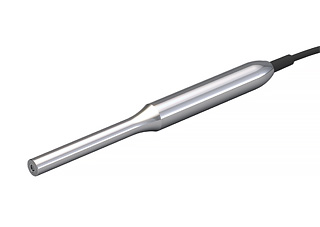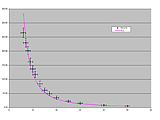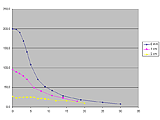Beta-Probe
1. Description
The medical Beta-Probe CXS-OP-ß was made for the detection of low energy gamma radiation (12 keV < Egamma< 50 keV) and beta radiation (100 keV < Ebeta < 2 MeV) but can also be used for the application of PET-nuclides. The detection of PET-nuclides is limited by the different Beta+ energies of the used nuclides. Good results are achieved in particular by the use of 68Ga. The probe is not suitable for FDG.
The straight probe has a diameter of 12 mm and can be used intraoperatively (with a sterile cover) as well as preoperatively. The sensitivity is approximately 15.000 counts/s/MBq, the dihedral angle is 45 °, the spatial resolution is about 12 mm.
2. Technical Data
| Detector | 20 mm2 pin-photodiode, entrance window made of Saphire, D = 0,2 mm |
| Gamma-energy range | 20 keV … 60 keV |
| Beta-energy range | 140 keV ... 2 MeV |
| Probe properties | length: 220 mm; length cable: 3 m diameter hand piece: 20 mm diameter tip: 12 mm weight: about 6 ounce (170 g) |
| Special features | no additional collimator sleeves available |
2.1 Collimation
| Material | Tungsten, lateral 1,25 mm wall thickness, rear 5 mm wall thickness |
| Dihedral angle (FOV) | 45° FWHM |
2.2 Background sensitivity
Zero effect < 2 counts/min
2.3 Sensitivität und Aufl÷sung
The sensitivity of the probe is determined by a 90Sr-source (EBeta, max. = 546 keV; activity of the point source is abot 100 kBq). Its documented in the supplied measurement protocol and is about 15.000 counts/s/MBq.
The spatial resolution of the beta-probe is 5 mm at a distance of 0 mm between probe tip and the radiation source. It drops to 12 mm at a distance of 10 mm.
3. Use in PET studies: positron detection **
The Beta-probe can be used conditionally for the lokalisation of positron (beta+) radiation emitters which occur in the use of PET radiopharmaceuticals. The absorbtion mechanism is very similar to those of normal betas. The achievable spatial resolution and sensitivity allows the use with 68Ga. Because of the low beta+ energy the Beta-probe CXS-OP-ß cannot be used for the application with 18F.
3.1 Sensitivity at beta+-detection
68Ga (beta+-Energy ca. 1,9 MeV)
The maximum sensitivity of the Beta-probe CXS-OP-ß for the beta+-emission of 68Ga (beta+-energy 1,9 MeV max.) is > 20.000 counts/s/MBq (extrapolated to the distance "0" of radiation source and probe tip). The figure to the right shows the count rate of the beta+-detection of 68Ga-radiopharmaceuticals. The detection is possible up to a distance of 5 cm in air, what allows the use in surgical operations.
18F (beta+-Energy ca. 634 keV)
The maximum sensitivity of the Beta-probe CXS-OP-ß for the beta+-emission of 18F (beta+-energy 634 keV max.) is < 300 counts/s/MBq (extrapolated to the distance "0" of radiation source and probe tip) and therefore almost 100 times lower as with 68Ga. The figure to the right shows the count rate of the beta+-detection of 18F-radiopharmaceuticals. The detection is possible up to a distance of 1,5 cm in air, what complicates the use in surgical operations.
68Ga (beta+-Energy ca. 1,9 MeV)
The local resolution of the Beta-probe CXS-OP-▀ for 68Ga (beta+-energy 1,9 MeV max.)-PET is 8 mm at a distance of 6 mm and drops to 16 mm at a distance of 15 mm. Therewith a good localisation of the radiation source in surgical operations is possible.
18F (beta+-Energy ca. 634 keV)
The local resolution of the Beta-probe CXS-OP-▀ for 18F (beta+-energy 634 keV max.) is 10 mm at a distance of 6 mm and drops to > 40 mm at a distance of 20 mm, so nearly no local resolution is achieved. This properties in connection with the low count rates make a localisation of the radiation source in surgical operations impossible.
** The measurements were performed at the Clinic for Nuclear Medicine, Institut J. Bordet, Bruxelles 1000, Belgium





